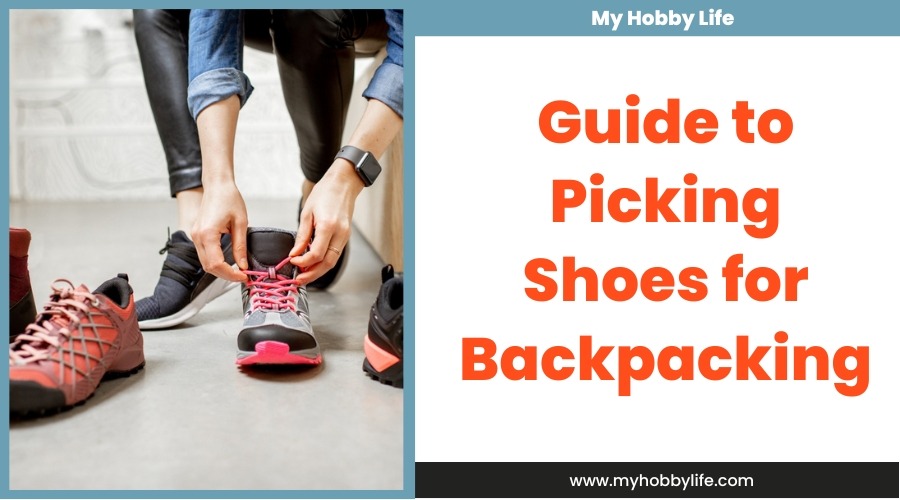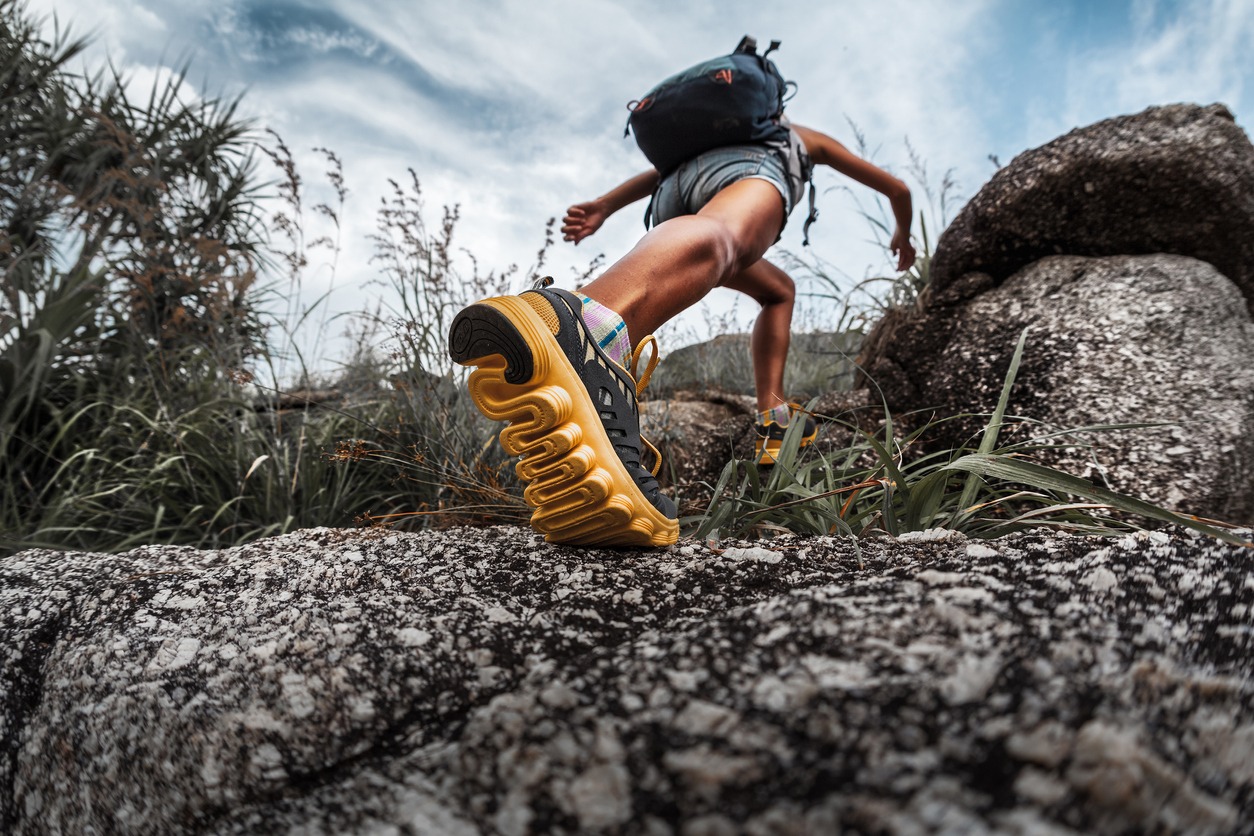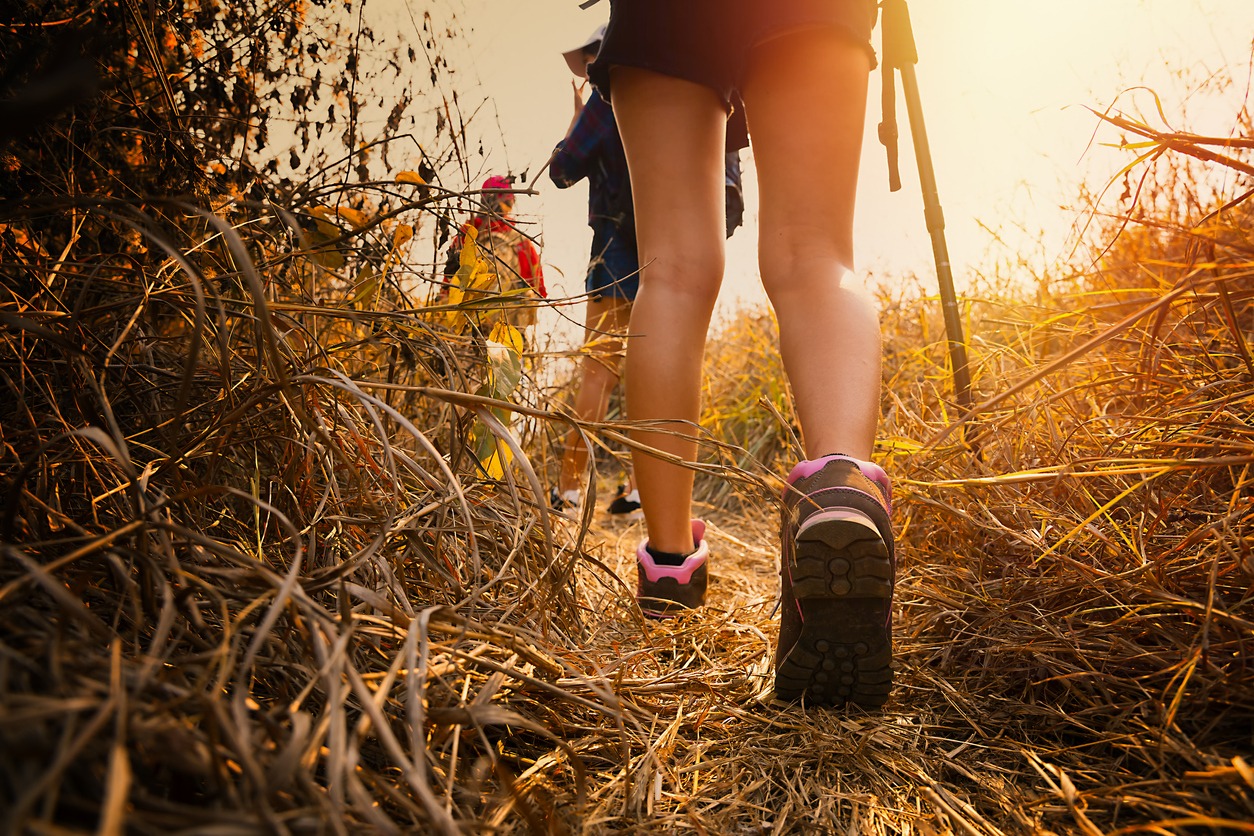Satisfying your wanderlust is a great thing, and it’s one of the most thrilling perks you can have as a backpacker. However, after each time you finalize your itinerary and book your tickets to amazing destinations, you get reminded that there’s a lot more to traveling than just mere fun and excitement.
Like many travelers, you face the age-old dilemma of choosing what clothes, supplies, accessories, and essential things to toss into your backpack.
Things even get worse when choosing shoes to bring on your trip. It’s a decision that most people take for granted, not knowing that your choice of footwear can immensely impact your enjoyment and overall experience.
With that, we’ve collated this guide and covered all the bases to ensure that you won’t run into such a scenario and instead pick the perfect shoes for your backpacking adventure.
Factors to Consider When Picking Shoes for Backpacking
Choosing the right shoes is an all-to-important decision, whether it’s dancing, skating, hiking, or anything. For backpacking, the selection process becomes even more challenging. You can’t simply bring in everything with you due to the limited space in your backpack.
To help you out, here are a few key points to consider when making the decision:
1. Comfort
Always keep in mind that comfort is king when it comes to backpacking shoes. While you may first take a look at how cool a shoe looks on your outfit, you’ll have to remember that you’d be walking on them for hours involving hundreds of miles and different kinds of terrain. That’s why you must get a pair that can provide the best level of comfort.
Refrain from shoes that pinch, rub, or don’t snugly fit. If you get a blister or sore foot, it can quickly kill your enjoyment and ruin the whole trip. Plus, you will most likely remember that painful experience and think how fun it could’ve been if only your feet were in a better place.
Know your feet to avoid such a scenario. Does any specific part of your foot hurt when walking? Check if it feels comfy when trying the shoe. Do you have any underlying foot conditions? Do you have a narrow or wide toe box? Do your feet require better arch support? Make sure to consider all of that, too.
Moreover, never ever compromise fashion for comfort. Trust us, you’ll regret choosing to look good after your feet hurt just a few minutes after arriving and walking in the city. With that, always pick a pair of shoes that keeps your feet comfortable. They’ll be your greatest buddy as you head visiting and seeing all those charming places and attractions.
2. Functionality
Let’s say that you were able to find the coziest pair of shoes – one that fits perfectly and comfortably, and provides ample support. Great! But if they’re not waterproof and you decide to visit rainy cities like Copenhagen, Denmark, or Quibdó, Colombia, your shoes will be useless for your trip as they won’t be able to serve the purpose they need to.
As such, ensure that the footwear you’ll be choosing matches the destination you’re headed to. First, check the destination’s weather. Is it cold or hot? Does it frequently rain? Is the weather humid? Afterward, you can choose the pair of shoes that best fit.
Another important consideration is the kinds of spots you intend to visit. For instance, if you’re having a backpacking trip to Thailand, do you only wish to visit Chiang Mai and see its Old city and stunning temples? Or do you also want to go to the beach by seeing Koh Samui and its surrounding islands? Will you just stay in the bustling city of Bangkok? Or, do you plan to see the country’s best hiking trails?
Don’t go for a shoe blindly. Always pick a shoe that fits your travel destination and the activities you’re slated to do. While the general consensus is less is more, it can be difficult to find a shoe that has all the right features. So, don’t fret about bringing two to three pairs of footwear, depending on your itinerary, plans, and the length of your trip.
3. Weight
Ideally, your backpack should not weigh over 20 percent of your total body weight. For example, if you weigh 180 pounds, your pack should not be more than 36 pounds. For beginners, it’s best to keep the weight of the pack at a maximum of 10 percent of body weight. As you gain more experience, you can start adding load on your succeeding trips.
Note that the weight of your backpack is crucial. If you pack too heavy, you will go slower and it will take longer for you to reach your destinations. Bringing a lighter pack makes it a whole lot easier and more comfortable to travel even in great distances and over extended periods.
With that said, it’s also vital that you consider the weight of your shoes. Heavy and bulky shoes are not easy to carry and wear. Plus, they will also eat up the weight you could have allotted for other essential backpacking accessories.
Hence, strive to look for more lightweight shoes. The lighter the shoes, the more pairs you can take with you. Moreover, you can avoid dragging yourself with a hefty backpack and pulling your feet with a pair of shoes – things you definitely want to experience on your trip.
4. Space
In relation to weight, there’s also limited space in your backpack. So, apart from opting for lightweight pairs. Look for ones that can easily fit and won’t take up lots of space in your pack. Of course, you cannot do something about the size of your feet. Choosing shoe sizes down just to allow the shoes to fit in your bag isn’t also an ideal move.
The best workaround is to find flexible or squashable shoes that you easily squeeze into your bag along with the other items. That even works best if you need to bring two to three pairs. You can wear your regular shoes on your feet and keep the extra squashable pairs in your pack with ease.
5. Durability
The next thing that you need to consider is the durability of the shoes. Skip low-quality, inexpensive shoes unless you want to be barefooted in the middle of your Grand Canyon or New York City adventure.
Often, buying cheap shoes to save money just for this trip can cost you more money in the long run. Investing outrightly in high-quality shoes in the first place and being able to use them on many of your trips is more rewarding.
Never compromise on quality. See to it that the shoes are constructed using high-quality materials and have proper stitching. Check the upper, middle, insole, and outsole. Ensure that the shoes provide essential features like traction, sturdy cushioning, and waterproofness.
If you’re buying online where you can’t see the actual shoes, don’t miss out on reading the reviews and checking other customers’ experiences. That will provide you ample insight into whether your chosen pair can withstand repeated use. If you can, you can also opt for more reliable, well-known brands so that you can trust your shoes won’t break midway and dent your backpacking budget. A good pair should last you for many years.
6. Style
While comfort should be your top priority when choosing shoes for backpacking, it doesn’t entail totally neglecting style. Take your personal tastes and preferences into account so that you can walk confidently no matter wherever you travel to.
For instance, if you like wearing vibrant outfits, pick a pair that’s trendy so it can match your wardrobe. If you like to maintain a low profile and are looking for something versatile at the same time, black shoes are your best since they can go with almost any outfit. Do you wish to get something that’s classic and timeless? Go ahead if that suits your style.
Remember that comfort must still take precedence over fashion in all circumstances. Just devote extra time and effort so you can find a comfortable pair of shoes that’s stylish as well.
General Types of Shoes for Backpacking
Now that you’re aware of the different aspects when picking the best shoes for backpacking, let’s take a look at the different types of shoes that you can bring to meet every demand of your feet during your travel.
Walking Shoes: Walking shoes are your everyday go-to shoes, which you’ll be wearing for most of your backpacking. Whether it’s visiting an art exhibit or museum, seeing old towns, trekking short trails, or other more adventurous activities, your walking shoes will be your most dependable buddy in a multitude of situations. Who knows? You might be traipsing a South American city one day and the next you find yourself in a jungle. A good pair of tennis or running shoes will already suffice for this.
Activity Shoes: If your itinerary involves rock climbing, hiking, canoeing, kayaking, or other more thrilling activities, it’s best to bring shoes that are a bit more sturdy and substantial that can withstand such pursuits. If you know that you’re an impulsive or a happy-go-lucky person who likes to take on random, unplanned activities, bringing this type of shoes will also be pretty valuable for your trip.
Fancy/Elegant Shoes: Not all backpacking trips are laid-back or adventurous, some entails attending elegant occasions or visiting sophisticated attractions. If you know you’d be exposed to such events or activities, it’s best to bring a fancier type of footwear to compliment your outfit. A pair of smart casual flats or sandals can already take care of the problem.
Backpacking Shoe Requirements for Different Types of Destinations
We’ll be stressing again that where you plan to go plays a crucial part when deciding what shoes to bring for your trip. To make things easier, here are some points to keep in mind to ensure that your footwear will be appropriate.
For cities: If you’re a backpacker who loves visiting famous urban backpacking destinations in the world, get a pair of comfortable shoes that can withstand long walks. It’s either you get a pair of casual running or tennis shoes or a lightweight, breathable, and durable pair of sandals. You can wear thin socks to add a little cushioning, prevent rubbing, and keep your feet from getting sweaty. Just bring enough pairs so you can wash them and wear a new pair each day.
For rugged trails and terrain: If you expect to traverse long trails or go on a full hike as part of your trip, it’s time to bring a pair of heavy-duty shoes. In this case, it’s best to wear hiking boots or trail runners that are perfect for such activities. Make sure that they are waterproof, reliable, and sturdy enough to endure arduous excursions.
For beach destinations: Most people prefer to wear flip-flops when traveling to beach destinations – not aware that sand is one of the worst types of surfaces any backpacker can walk on. If you already have any underlying condition with your foot, expect that wearing flip-flops will just aggravate the issue.
Though it’s okay to don flip-flops for shorter lengths of time, you will be better off wearing a pair of supportive sandals made of a robust material. Look for ones with a thicker sole to limit the amount of sand that can get under your feet. Just make sure that your feet are sand-free and completely dry before wearing your sandals again.
For more formal places: If you’re visiting first-rate cities where you need to appear a little chicer, throw in a pair of dress shoes if you still have space in your backpack. If not, just bring a pair of stylish yet reasonable pairs of shoes that you serve multiple purposes or use in other functions.
Backpacking Shoes for Different Weather Types
Once you’ve factored out the type of destination, it’s vital to consider the weather as well. Never make the mistake of getting cold feet just because you’ve decided to wear open-toed footwear during several days of travel in rainy or snowy weather.
For warmer destinations: Your walking shoes are still your best ally for warmer backpacking locations. If your itinerary primarily consists of exploring the attraction within the city and nearby destinations, just wear or pack the coziest pair of shoes you have and your feet will do and feel great throughout the trip.
For tropical, wet locations: Are you planning to visit Southeast Asia instead? Expect that the weather can be tricky and that you’ll experience good amounts of rain, especially during the monsoon season. With that, it’s best to bring waterproof walking shoes or everyday sandals. What’s great is that you’ll also be able to use them on boat trips, for short jungle treks, kayaking, and other activities involving water, which you’ll encounter a lot in Southeast Asia.
For snowy, cold weather: If you’re backpacking during the winter and visiting awesome city destinations like Prague, Amsterdam, or Reykjavík, bring a pair of lightweight yet dependable boots to keep your feet warm during your holiday. As boots can be bulky, wear them to the airport so you don’t have to squeeze them into your backpack.
Takeaway
No one wants to miss out on all the fun of backpacking just because they wore the wrong pair of shoes. So, make sure to use all the tips above to choose the perfect shoes for your adventure. Happy backpacking!



